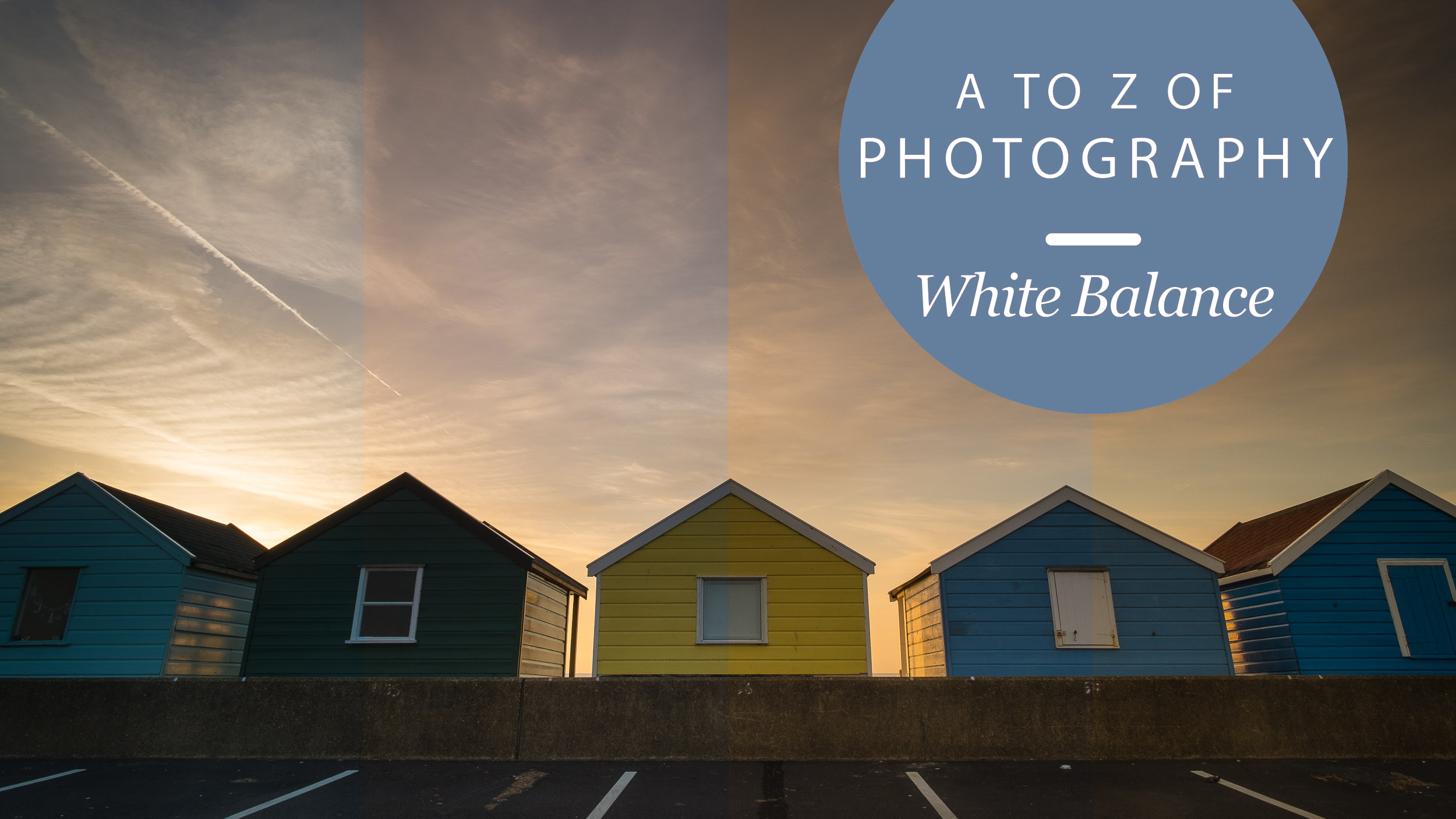The A to Z of Photography: White Balance

White balance is a camera setting that adjusts the color balance of light the you’re shooting in so that it appears a neutral white, and it’s used to counteract the orange/yellow color of artificial light, for example, or the cold light of deep shadow under a blue sky so that portrait shots taken in shade look more natural.
All digital cameras have an auto white balance setting that analyses the colors in a scene and neutralises them automatically. Mostly it does a very good job, though there are occasions when you need to override the auto white balance setting and choose a setting yourself.
One instance is where the color of the light is an intrinsic part of the picture, like the warm colors of a sunset, or the cool blue light of an early dawn. If you’re shooting in a dimly-lit bar or restaurant, you might want to preserve the color of the ambient light rather than correct it.
Another is where you want a consistent color balance across a series of pictures, and you don’t want the camera to be making its own automatic white balance adjustments from one shot to the next.
Manual white balance presets

This is why cameras also offer manual white balance presets that you can choose to match the conditions, to maintain consistency of color between shots or to force the camera to give you a very specific color rendition. For example, if you leave the camera set to it’s ‘daylight’ white balance preset, it will faithfully capture the changing colors from dawn to dusk in landscape photography without trying to correct them.
Alternatively, indoors or in a studio you might take a custom white balance setting from a grey card or some other neutral toned subject so that the color has a consistent neutral look across all the pictures you take in that setting.
White balance preset are usually described according to the conditions you’re shooting in
White balance preset are usually described according to the conditions you’re shooting in, so cameras will typically offer ‘daylight’, ‘cloudy’, ‘shade’, ‘incandescent’ and other presets. In professional studio photography, though, it’s more common to measure white balance in ‘color temperature’, which is measured in degrees Kelvin.
Sign up for breaking news, reviews, opinion, top tech deals, and more.
For example, daylight is reckoned to have a color temperature of around 5200-5500 degrees Kelvin, artificial tungsten light is around 2400-2600 degrees Kelvin, while open shade under a blue sky can be as high as 7500-9500 degrees Kelvin. Studio lighting is generally calibrated in degrees Kelvin so that photographers can more easily match the camera’s white balance to the light source.
Temperature and tint

But while color temperature values are still used widely, today’s digital cameras work with not just a ‘temperature’ setting but a ‘tint’ setting too. Regular color temperature is measured on a red/yellow/white/blue spectrum, while tint is an added variation along a green/magenta spectrum. When you’re making white balance adjustments it’s now conventional to adjust both.
You can choose the white balance setting on the camera, but if you shoot raw files rather than JPEGs, you can choose it later when you edit your images. With JPEG files, the white balance setting is ‘baked into’ the pictures as they are processed by the camera and any extra color data is discarded. With raw files, the full color data captured by the sensor is saved in the file, and while the camera’s white balance setting is recorded with the data it can be used or ignored later when you process the image.
Even if you shoot raw files, selecting an appropriate white balance at the time of shooting is useful because it saves processing steps later on and the camera’s auto white balance system may offer a good compromise setting that’s difficult to improve on manually.

Rod is an independent photographer and photography journalist with more than 30 years' experience. He's previously worked as Head of Testing for Future’s photography magazines, including Digital Camera, N-Photo, PhotoPlus, Professional Photography, Photography Week and Practical Photoshop, and as Reviews Editor on Digital Camera World.